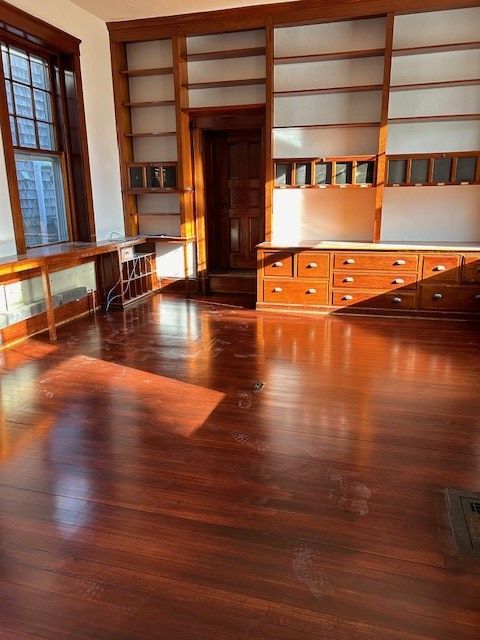Maria Mitchell Vestal Street Observatory Conservation Update: February 2025
We are still quietly working away. Now that the paint and plaster repairs are done, the woodwork and shelving has been conserved, and the floor has been redone in the Astronomical Study, we have turned to the concrete floors. These are being worked on by Evita Caune of Riptide Finishes – she had done Hinchman House’s cellar floor and those in the Research Center. The Observatory cellar floor is coming along and she is also working on the Pillar Room – so named because it houses the pillar that supports the telescope in the Dome Room. If there was an original finish on any of the three concrete floors – the Pillar Room, the Dome Room, the cellar under the Astronomical Study – it is gone. They applied many layers of paint that eroded and chipped with time. I do now know why the Pillar Room had a red floor at one point (took me long enough) – probably to match the red tile they put on the original wood floor in the Astronomical Study. Evita is giving us a nice clean coating in the Pillar Room and the cellar and we may have a bit more fun with the floor in the Dome Room – all of this is reversible which comes from a conservation perspective. All the interior conservation work was funded by the Community Preservation Act – as was the exterior conservation.
One note – the Astronomical Study’s original floor was a total loss as far as finish is concerned. I may have noted this before. It was truly sad. The original wood floor was covered in multiple layers – tarpaper glued to the wood. Then a layer of red tile (tested and was safe), then another layer of tarpaper and glues. Then foam padding and a 1980s blue wall-to-wall carpet – they liked that carpet so much it used to be in the Astronomer’s Cottage too! We thought the tar paper beneath the tiles would be easily removed from the wood. It was not. It had basically melted and seeped into the floor so we have to lightly sand the floor and then refinish it. That was quite sad – but at least we have the original wood floor intact.
JNLF
Recent Posts





